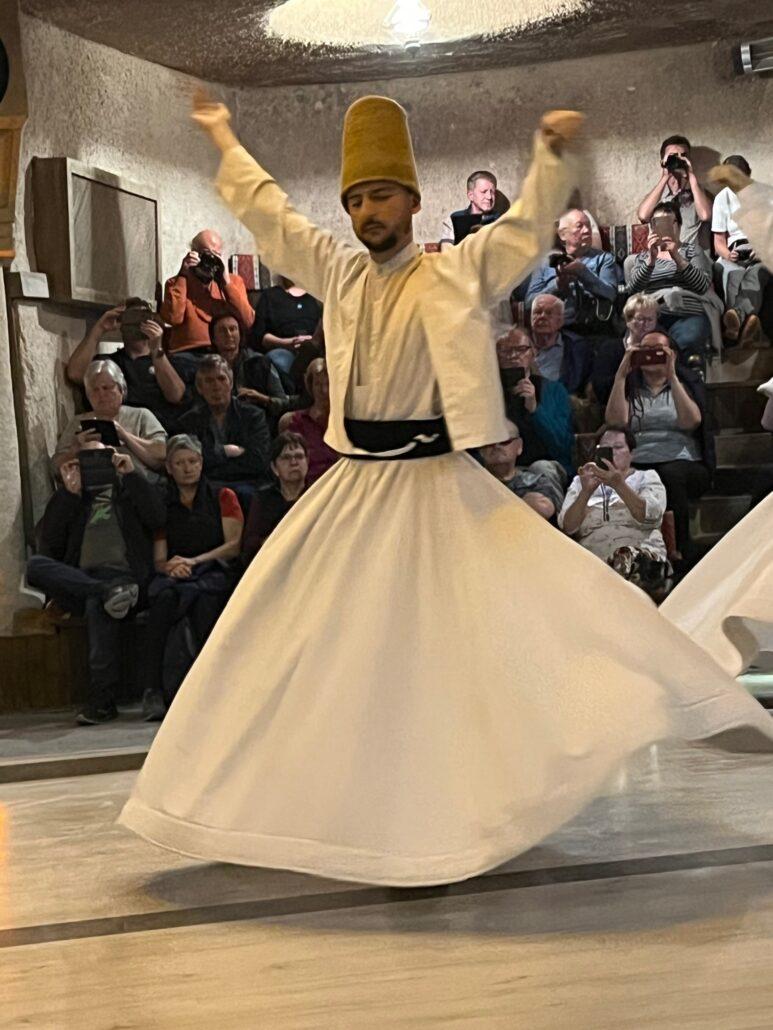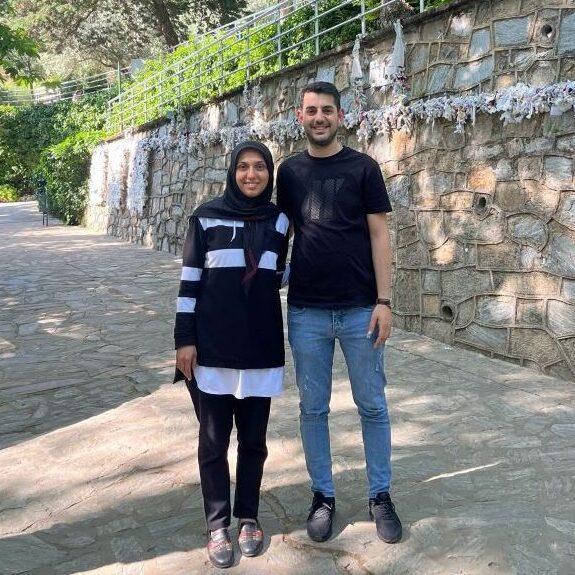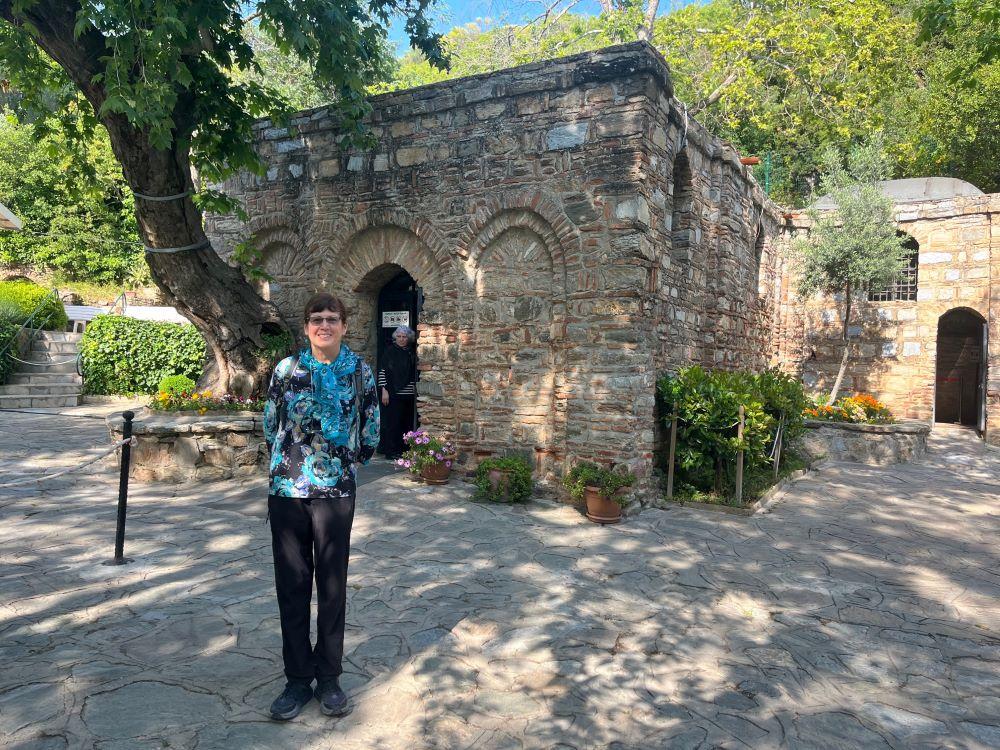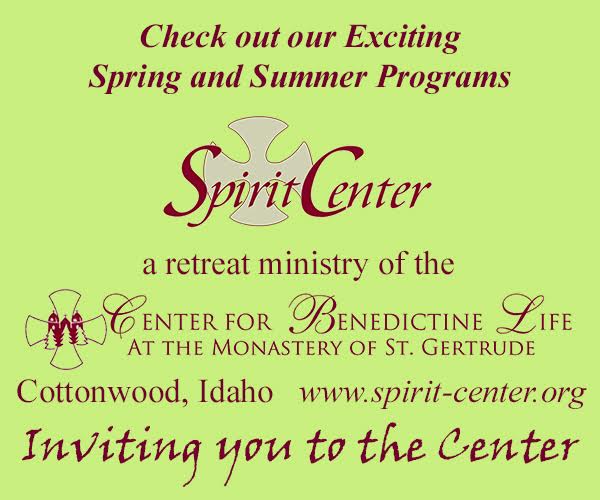Who Are Two Bridge-Builders between Christians and Muslims?
Commentary by Susie Leonard Weller
Recently, my husband and I returned from traveling for nine weeks in Malta, Egypt, Jordan, Greece and Turkey. Although we enjoyed seeing amazing sights, I particularly treasure visiting two sites.
I attended a Whirling Dervish Ceremony near Goreme, Cappadocia, and also visited “Meryem Ana,” the home of Mary, mother of Jesus, in Ephesus. I consider both Rumi, creator of the ceremony I witnessed, and Mother Mary to be unique bridge-builders between Christians and Muslims.
Rumi, a 13th century poet, scholar and internationally renowned Sufi mystic, spent most of his life in Konya — about 150 miles from Goreme. I felt grateful I could attend one of his Sema or Whirling Dervish Prayer Ceremonies.
Rumi told his followers: “There are many roads to God. I have chosen the one of dance and music.”
The Whirling Dervish Ceremony
The Whirling Dervish Ceremony began with the host reminding the attendees (mainly tourists) that this was to be a prayerful meditation experience and to refrain from taking any photos until the end. Five musicians played a reed flute, drum, violin, zither and lute.

There were also five dancers who walked onto the circular stage wearing long, black cloaks covering their white robes. Each wore a tan, tall conical felt hat representing a tombstone over their ego.
Before they started to dance, they cast off their cloak, or symbol of worldly life, and prepared to twirl. They used their left foot to propel their body while keeping their right foot stationary and gradually increased their pace as they circled around the floor.
Although I felt a bit dizzy watching them, the dancers moved with ease and precision.
Each attendee received a pamphlet describing six parts of the Sema to help understand the sequence of the dance.
It ended with a concluding prayer asking for peace for the souls of all believers.
We were invited to visit their library/book store and to drink Serbet — a special cinnamon tea. As a reminder, I bought a cardstock card summarizing the 7 Advices of Mevlana. The three pieces of wisdom that most inspired me were:
In generosity and helping others, be like a river.
In compassion and grace, be like the sun.
In tolerance, be like the sea.
I most resonated with Rumi’s admonition to expand our capacity for tolerance — especially for people with different spiritualities.
When I attend the Sufi Dances for Universal Peace at the next Fall Folk Life Festival in Spokane, I will enjoy a deeper appreciation for how relevant Rumi is for all people and faith traditions.
Meryem Ana or “Mary’s House”
My second most memorable experience was in Ephesus. While staying at the Ave Maria Hotel in Selcuk, just outside of Ephesus, I asked the hotel clerk about public transportation to visit Mary’s House.
Since only expensive taxis were available, he generously offered to take me for a minimal fee. Together with his friend, a Muslim housekeeper, we made a pilgrimage to visit Meryem Ana.
I was surprised to learn that Muslims also revere Mary. The Quran includes several verses describing Mary’s virtues and qualities as “She Who Was Chosen” and the “Greatest of Women.”
On the cross, Jesus entrusted the care of his mother to his disciple, John. (John 19:26-27) When Christians fled persecution in Jerusalem, it is believed that John took Mary to Ephesus, where Paul had founded a thriving Christian community.
Tradition suggests that Mary lived with John until she died. The house where Mary lived with John the Apostle is now known as “Mary’s House.” Her bedroom has become a chapel.
I was surprised that when I stood in front of the altar and Mary’s statue, I began to cry. I sensed Mary’s pain as a mother who witnessed all the pain that her son bore. I remembered the Scriptural phrase from Simeon when Mary presented Jesus for his circumcision in the temple: “And a sword shall pierce your heart.” (Luke 2: 34-36)
I felt a wave of healing love envelop me as Mother Mary also recognized the pain I had been carrying since childhood. I re-entered her chapel a second time to allow more time for her motherly support to deepen within me.

Similar to Lourdes, and other Marian pilgrimage sites, there is a spigot for holy water, a place to make intentions while lighting a candle and a wall for writing a prayer request.
I bought candles for the three of us — the Christian hotel clerk, a Muslim housekeeper, and myself — to make our prayer requests. We also wrote our intentions on some paper and hung it on the wall along with hundreds of other appeals for her support.
In my home office, I have a photo of my two Turkish friends on my wall. They remind me of the kindness of strangers throughout our travels. Similar to Rumi and Mother Mary, they also inspire me to find ways to be a bridge-builder wherever I am.









Fascinating! So good to hear of bridge builders between religious traditions. Maybe Rumi’s poetry can be compared to Mary’s ponderings.